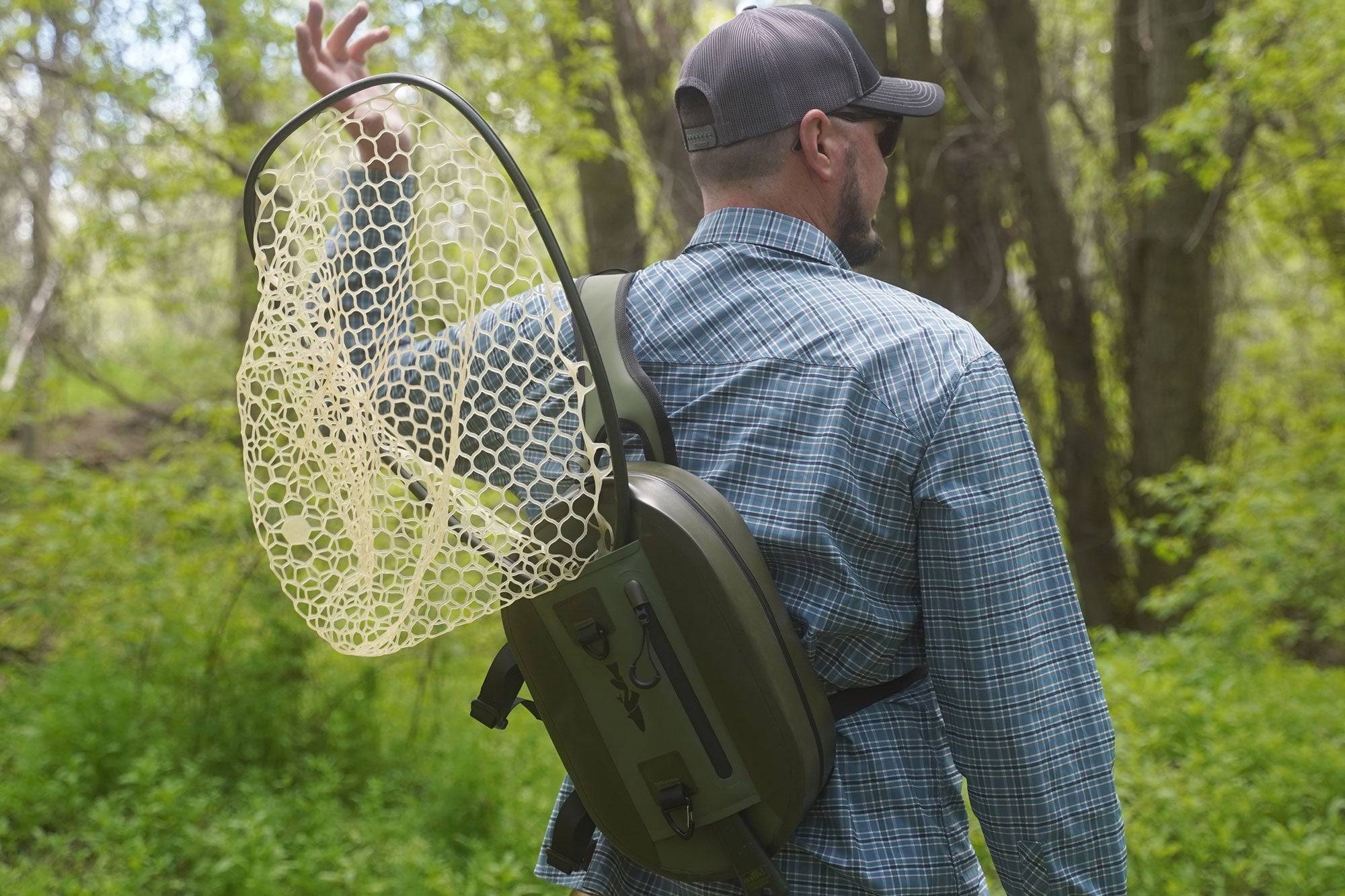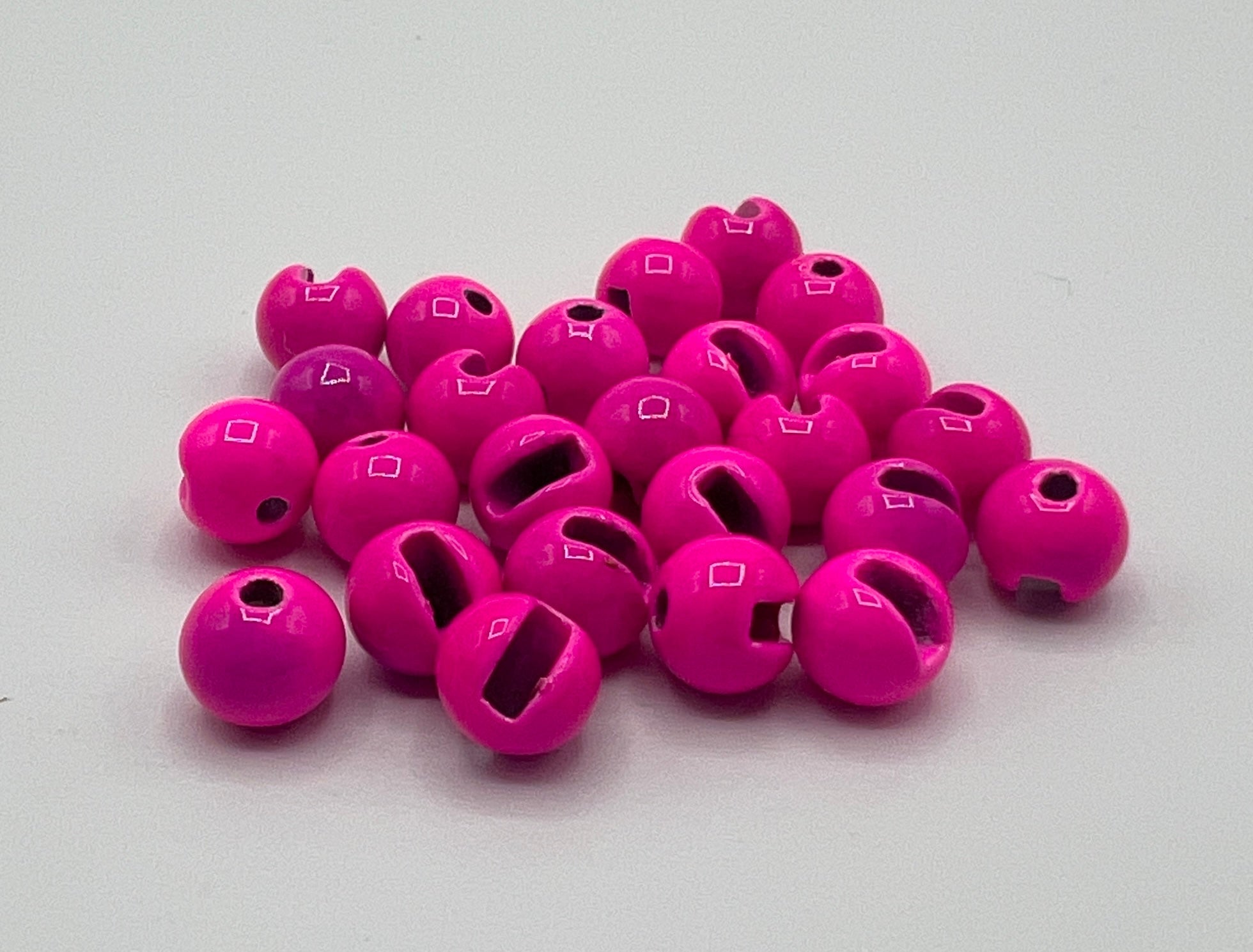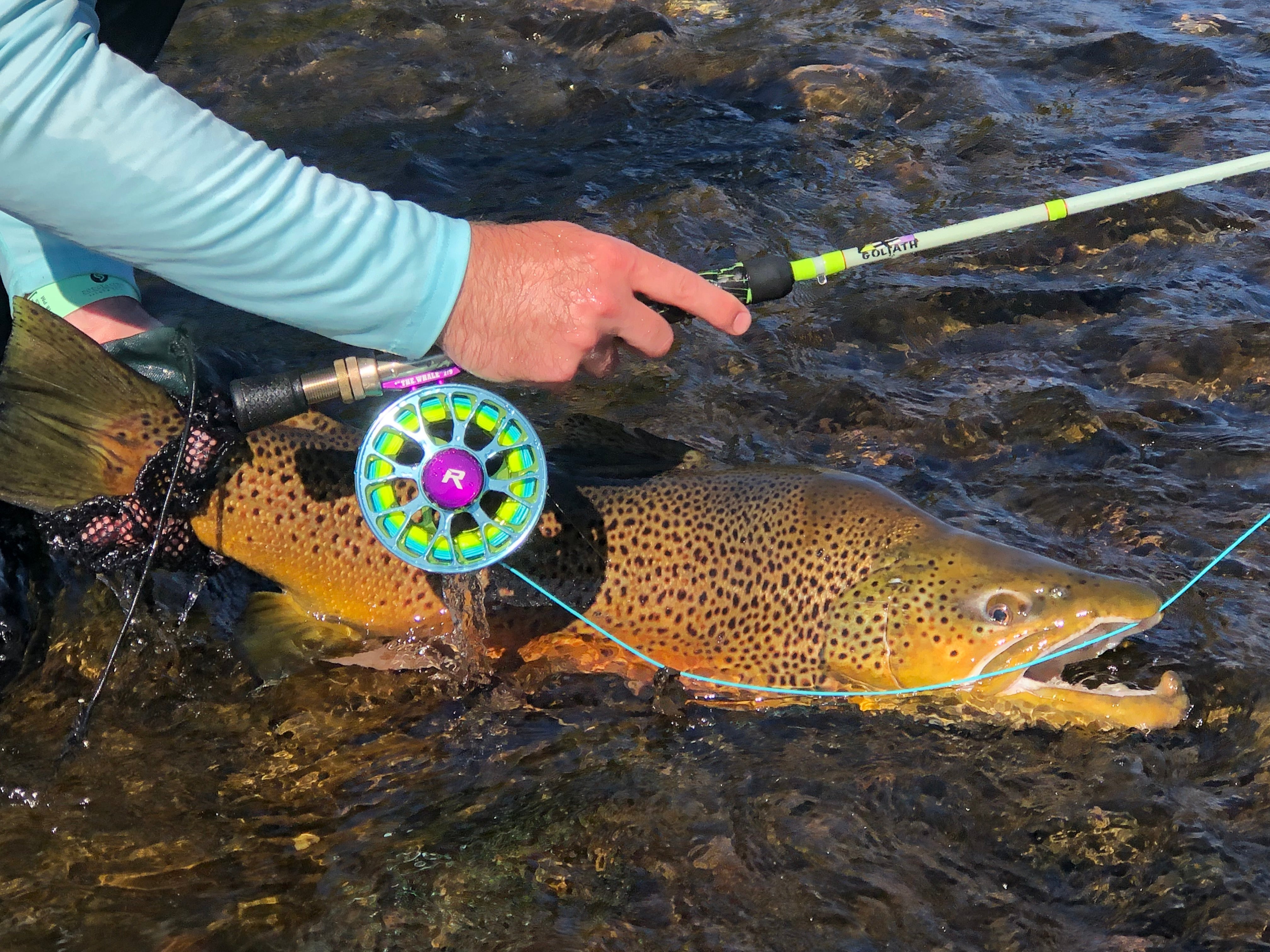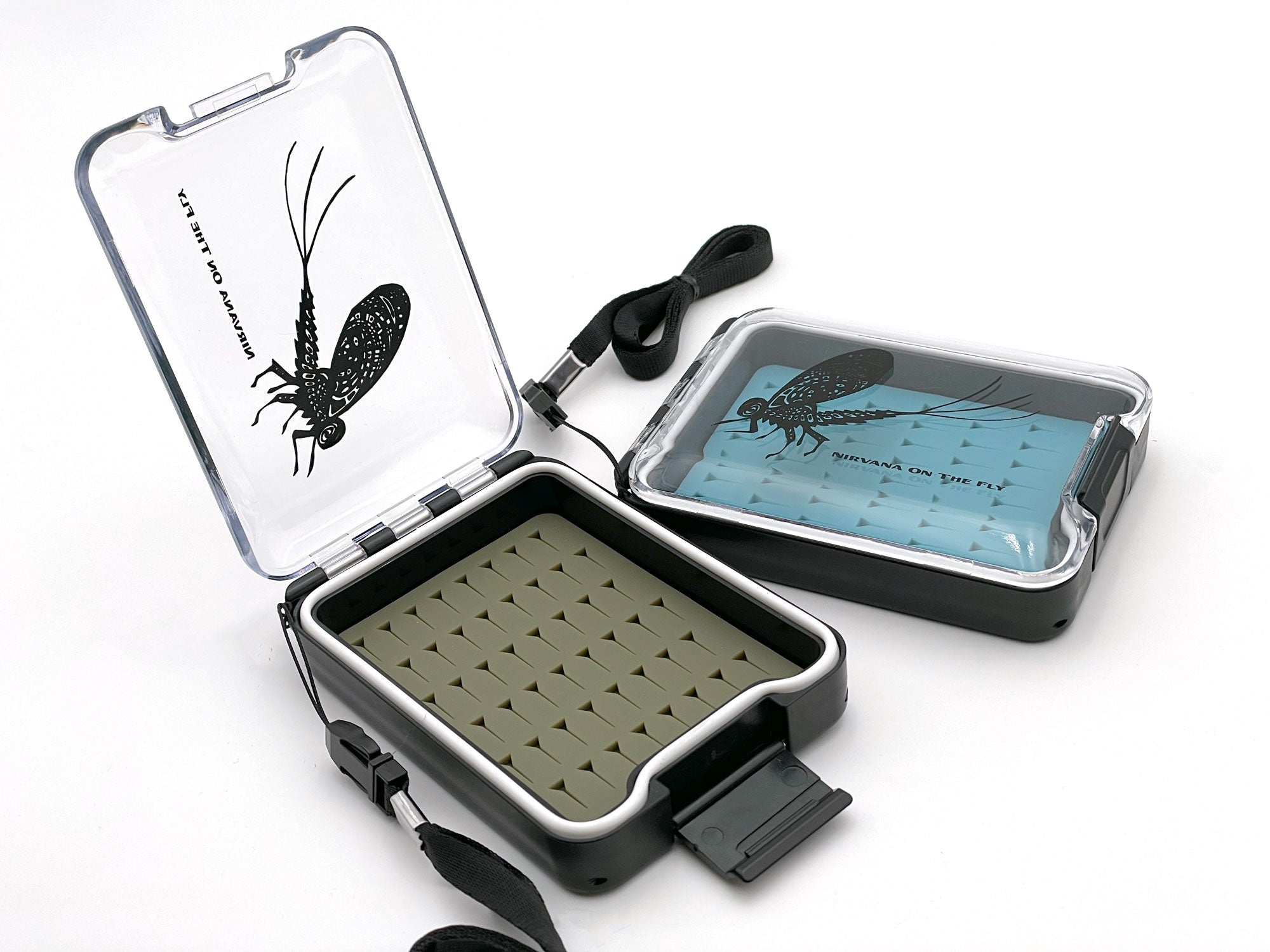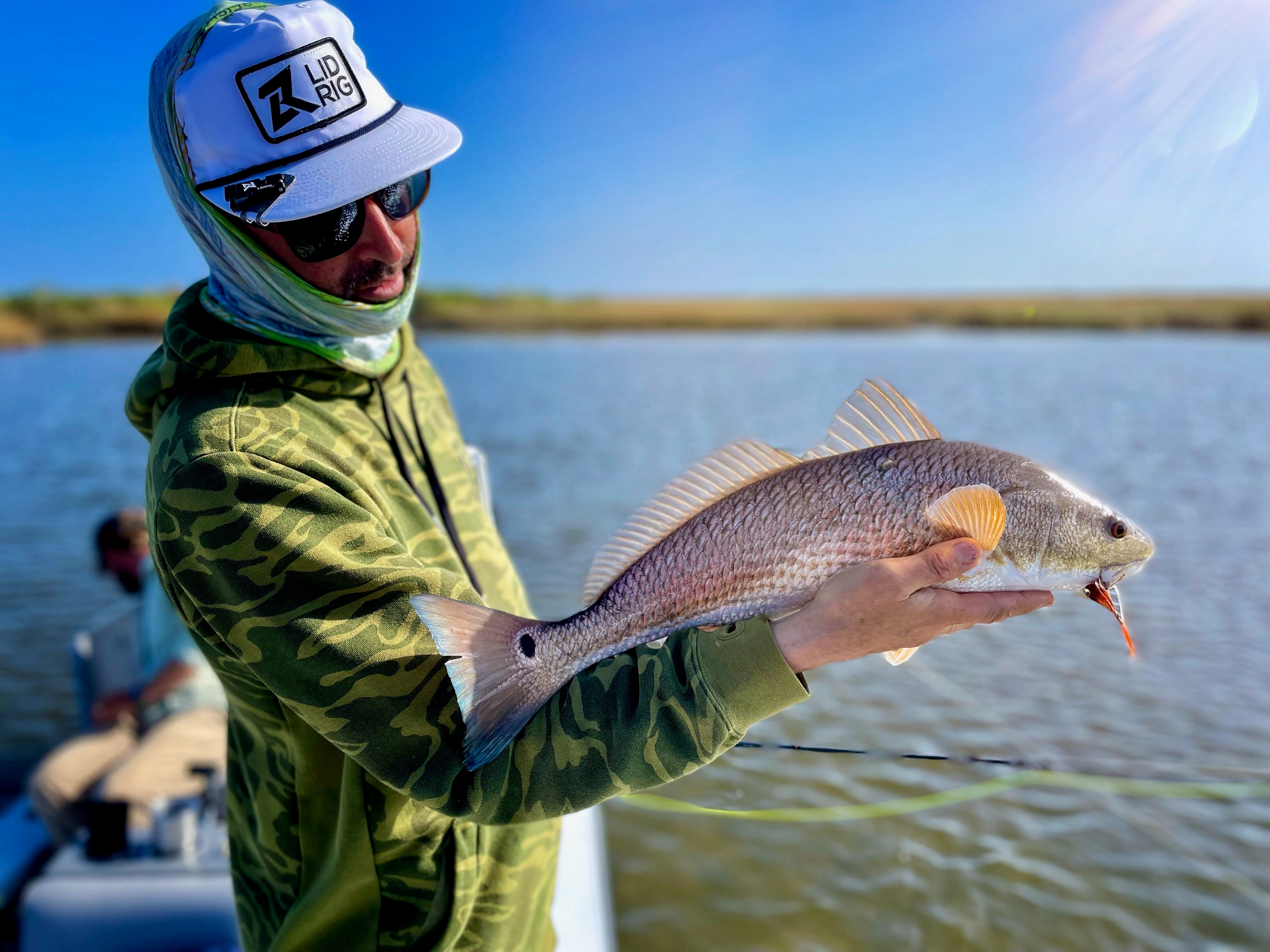If you haven't read Part 1 - Become a Better Angler | Fly Fishing Insider Podcast, I highly suggest reading that as well
Part 2 - Become a Better Angler | Fly Fishing Insider Podcast
Understand Fish Behavior and Habitat:
Different fish species have unique behaviors and preferences. Learn about the species you are targeting, including their feeding habits, preferred habitat, and seasonal movements and become a better angler. These behavioral traits are clues to what they will be doing while you are fishing them. Next dive into what their physical traits are and how they can drive certain actions and behaviors. Is their mouth built for bottom feeding, and are their tails forked for turning quickly to attack baitfish? All of these clues point you in converging directions. These convergences are your targets and strategies to becoming a better angler.
Expanding on the tactic, "Understand Fish Behavior and Habitat," is a key aspect of becoming a better fly fishing angler. This involves learning about the specific species you are targeting, their habits, preferences, and the environments they thrive in. You are like a PI (Private Investigator) collecting clues that will help you understand why and when the behavior of feeding is happening so you can begin to see patterns and replicate processes. Here's a detailed breakdown:
Understanding Fish Species to Become a Better Angler
Species-Specific Behavior: Different species of fish have varying behaviors. For example, trout are known for their selective feeding habits, while bass might be more aggressive. Permit for example have acute vision and a crusher in their mouth. All of these characteristics are clues on feeding and behavior.
Feeding Patterns: Learn what your target species eats and when they are most likely to feed. Some fish are more active during dawn and dusk, others in full daylight. Some hunt in schools others are ambush predators.
Habitat Preferences
Preferred Waters: Different species thrive in different water types. Trout often prefer cold, oxygen-rich streams, while bass might be found in warmer, slower-moving waters. Saltwater species have similar traits. Some may prefer more or less salinated waters.
Hiding Spots: Fish often seek shelter under rocks, in riverbeds, near downed trees, and in weed beds. Like a Muskie they will often hold in areas where they can come and ambush a predator without them even being aware of their presence. Knowing these habitats can help locate fish and present a fly in a manner that is most conducive to an eat. This is an ideal trait to learn and adapt when you are looking to become a better angler.
Seasonal Movements
Spawning Behavior: Many species have specific spawning times and locations. Understanding these can provide insight into fish movements and concentrations. How they may put on a feed bag prior to spawning or may not be interested in standard foods when spawning.
Seasonal Migration: Some fish, like salmon and steelhead, migrate at certain times of the year. Knowing these patterns can significantly increase your chances of success. No sense in fishing for Kings if the kings haven’t even started their migration into your planned target zone.
Water Temperature
Optimal Temperatures: Each species has a preferred temperature range that is aligned with their metabolic feeding temperatures. Water temperature can affect fish metabolism and feeding habits and turn them off and on in a feeding habit so staying in those windows can significantly change your fishing behavior. Often I’ll fish a streamer for Trout when I’m out of the feeding temperature because I’m looking for a reactionary or territorial bite instead of a feeding bite.
Temperature Shifts: Sudden changes in temperature, like those from cold fronts or heatwaves, can impact fish behavior. Whereas tailwaters from a dam may be much more consistent and in the zone vs. freestones that change temperature with the season or weather. Adapting to these changes is crucial in your success. When I was first starting and looking to become a better anglers, carrying a thermometer and observing temperatures was key strategy for me. It really enabled me to see things differntly and understan when certain tactics wer futile.
Weather and Atmospheric Conditions
Barometric Pressure: Changes in barometric pressure can influence fish behavior. Some anglers find fish to be more active after a drop in pressure. This is liken to moon phases and the changes that occur in tidal formations.
Rainfall and Runoff: Rain can affect water clarity, levels, and temperature. It can also wash insects and other food into the water, changing feeding habits. This can drastically change the location of fish. For example, during flooding trout tend to prefer habitats on the edges of rivers and lakes where currents are slower and the insects of the dry spaces are flooded out of their natural habitat and into the water as food articles.
Biological Rhythms
Diurnal Patterns: Understanding, if your target species is nocturnal, diurnal, or crepuscular (active at twilight), can help in planning your fishing times. I in particular only fish for big trout at night. They tend to have a nocturnal habit for feeding and I target them specifically with mice. I know that my propensity to pick up a large trout from dark until 1 AM is extremely higher than other times of the day. Want to become a better angler? Start fishing at night every once in a while. It really forces you in to situations that are not your norm and drive different thinking habits.
Moon Phases: Some anglers believe that moon phases can affect fish behavior, particularly in saltwater environments. The tidal changes are affected by the moon. Light also can be applied and allowing fish to hunt and feed throughout the night in cover vs during the day therefore flipping the timing of their eating and full belly scenarios.
Observation and Adaptation to Become a Better Angler
Observing Fish: Spending time watching how fish react in their natural environment can provide valuable insights. I love going to the river every once in a while with the dog and no rod. We walk and look for fish in sitting positions. This can be a great activity when you only have a short period of time but want to work on your skillset to become a better angler.
Adapt Techniques: Be ready to adapt your fishing technique based on the behavior and habitat of the fish. This might mean changing flies, adjusting your approach, or even moving to a different location. I talk about this all the time on the Fly Fishing Insider Podcast. Understanding that every time you fish you are looking to add to your repertoire of moves that are effective for fishing. The process is an ever-growing learning process. Adding additional tactics each time you read, fish, talk with strangers, etc. is ideal for adaptation. Gather information, test, and apply what works for you. Each time you add a move to your repertoire you gain a slight edge and directly focus on a way to become a better angler in fly fishing.
Here is a simple tactic or move to add to your repertoire and increase your odds.
Environmental Impact
Human Activities: Be aware of how human activities like agriculture, damming, and pollution can affect fish habitats and behavior. I’ll never forget fishing a smaller creek and while the fishing was fantastic all of a sudden the fishing shut off for a longer period of time. When my fishing buddy and I hiked up we found a dead cow in the water. This obviously drastically affected the PH balance of the water causing the local Cutthroat to move and relocate.
Conservation Awareness: Understanding the ecological impacts on fish habitats helps in practicing sustainable fishing and directly supports your efforts to become a better angler and the environment of angling. A great what to learn a ton about a specific species is to read articles from conservation organizations. They are detailed in areas where we may be less focused. You can often find critical information information on feeding habitats, spawning grounds and times, etc.
Research and Learning
Read and Research: There are numerous books, articles, and online resources about fish behavior and habitats. Continuously educating yourself is key. I have an ongoing stack of books that I am reading. Sometimes it is overwhelming but I love hardcovers so I can always go back and reference them. I easily have several bookshelves of books and I’ve researched each local library for additional reading material. When first starting and starved for information on how to become a better angler the library was an amazing resource.
Local Knowledge: Engage with local fishing communities or hire guides who can provide specific insights about the fish in their area. The best I’ve found here is fly-tying gatherings. People become open books when they start describing how, why, and where they love fishing the fly they are tying.
Understanding fish behavior and habitat is a complex and nuanced aspect of fly fishing. It requires patience, observation, and a willingness to learn and adapt. The more you understand about the fish and their environment, the more successful and fulfilling your fly fishing experiences will be. Add every move you can to your capabilities.
My friend Kirk Deeter, helped write this book, The Little Red Book of Fly Fishing and it is full of learning material.
Develop Stealth and Approach:
Fish are easily spooked. Move slowly and quietly, use natural cover, and consider your shadow and silhouette. A stealthy approach can be the difference between spooking fish and catching them. In fact, I prefer looking at it as “Having a chance to target a fish” or “Not having a chance to target a fish!”
The tactic, "Develop Stealth and Approach," is vital in fly fishing. Fish are often highly sensitive to disturbances in their environment, so a stealthy approach can significantly increase your chances of success. Here’s how to refine this skill:
Understanding Fish Senses to Become a Better Angler
Sight: Fish have a keen sense of sight and can detect shadows and movements above the water. Approach cautiously to avoid being seen. This article describes the feeding zone of trout and will show you how the vision can come into play.
Sound: Sound travels faster in water than in air, so walking heavily on the bank or wading noisily can spook fish. The best example I can give is walking in the flats. Walking on sand is far quieter than waking on dead coral heads, etc. where the crackling is likely heard significantly further away.
Vibration: Fish can detect vibrations through their lateral lines, so even subtle disturbances in the water can alert them to your presence. I recall reading a book as a kid and learning that you standing in the water upstream can redirect the currents enough to change the feeling a fish is receiving on its lateral line further downriver.
Approaching the Water
Stay Low: Try to keep a low profile when approaching the water. Crouching or even crawling can prevent fish from spotting your silhouette. Don’t forget that fish often sit on the edges so walking right up can spook what are often great chances for feeding fish. I think it was a local well known angler that once said, "I watch people step over fish to catch fish all the time!" Want to become a better angler, then slow down, step back and start casting before you reach the water.
Use Natural Cover: Approach from behind trees, bushes, or rocks to conceal your presence. Hunkering low and blending in will give you a chance for observation and planning your first and most important cast.
Avoid Casting Shadows: Be mindful of the sun's position. Casting a shadow over the water can alarm fish. Try to keep the sun in front of you. Also, be observant of your long and waving rod overhead. The shadow and or shadow casting has the same potential effect.
Wading Techniques
Slow and Steady: Move through the water slowly and deliberately. Quick movements can send alert signals to fish. I love thinking and likening myself to a cat in a predatory position. They creep, crawl and gently move into position before attacking. Entering each step toe to heel vs. heel to toe.
Minimize Disturbance: Lift your feet gently while wading to avoid stirring up the bottom. Muddy plumes can scare fish away. This is sometimes unavoidable in the water but when observing you can often see where problem areas can be avoided.
Depth Awareness: Wade only as deep as necessary. Deeper water creates more disturbance. With depth you also cannot see what is underneath or nearby so prospecting those areas first can be effective.
Clothing and Gear to Become a Better Angler
Camouflage and Neutral Colors: Wear colors that blend with the natural environment. Avoid bright or reflective clothing and gear. Bright colors look fantastic in photos but they are eye sores for fish on the alert. A bright red jacket is far more likely to stand out than a muted blue that blends in with the sky.
Soft-Soled Wading Boots: These can reduce noise and are less likely to disturb the riverbed. Although cleats are great a felt boot or soft-soled boot can take away that vibration and reduce sound as mentioned above.
Casting Considerations
Longer Casts: In clear water or when fish are wary, longer casts can be more effective to keep your distance. There is a gentle line between long casts and effective presentation. Know your limits and the limits of the situation. Practicing both here in non-detrimental waters can be an excellent learning experience.
Accuracy Matters: Work on casting accuracy to avoid multiple casts, which can alert fish to your presence. I’m a huge fan of using a 2 backcast limit for all my casts. An additional technique is shadow casting over water that is not being targeted and then redirecting when you are ready to present your fly.
Gentle Presentations: Practice casting so that your fly lands gently on the water, minimizing splash. This is a great casting technique practice. Take several rods to a lake that are all different weights and speeds. Then cast each one with a similar leader and fly and really attempt to present it as gently and accurately as possible. You’ll see that your speed, angles, etc. will change with each rod and give you variations to your casting abilities.
Observing Before Fishing
Take Time to Watch: Spend some time observing the water before starting to fish. Look for fish activity and plan your approach accordingly. Feeding, moving, scurrying, etc. are all observations of fish and we look there all the time. Now look around at sun position, wind, bushes, insect clues, etc.
Fish from the Bank When Possible: Sometimes the best approach is to cast from the bank, avoiding entering the water altogether. I know we spend all this time and money on waders and boots but sometimes not entering the water and fishing from afar is deadly.
Behavioral Adaptation
Adapt to the Environment: Different environments may require different approaches. For example, in a small stream, you might need to be more cautious than in a large, noisy river. Casts can be different as well. I fish a small creek for Cutthroat around here that is heavily overgrown. I always take a shorter lightweight rod with a short leader, knowing I’ll be performing a bow and arrow cast 90% of the time to get on fish.
Learn Fish Behavior: Understanding how the fish in your target area behave can guide how you approach them. For example, this is a watershed that has spooky fish or a waterway that has primarily protein-rich nymphs and I can be relatively aggressive in my approach.
Silence and Patience
Quiet Gear: Ensure your gear is quiet. Avoid clanging metal tools or zippers that can make noise. Keep the items attached to you from splashing into the water or moving about and creating additional noise or vibrations as you wade.
Patience is Key: Sometimes, it’s about waiting for the right moment to cast or even waiting for fish to settle back down if they’ve been disturbed. Learning to rest a fish and tactically approach it is a skill. Practice next time by resting the fish and why doing so attaching a new fly setup to present a slightly different food choice. This will force you into resting a bit longer and observing the behaviors before that next and hopefully successful cast.
Developing a stealthy approach in fly fishing is as much about understanding fish behavior as it is about mastering your own movements and tactics. It requires patience, observation, and a willingness to continuously adapt to the environment and the fish. This skill not only increases your chances of a successful catch but also deepens your connection to the natural world and the art of fly fishing. Look at it as a chance to take in the beautiful surroundings and enjoy the aspects of fishing that are not directly correlated to catching and instead truly a part of fishings most valuable trait…observation.
Download the Dry Fly Tactics for Selective Trout eBook


By Christian Bacasa
Host of the Fly Fishing Insider Podcast
www.ffipodcast.com
@flyfishinginsiderpodcast
@dupeafish



